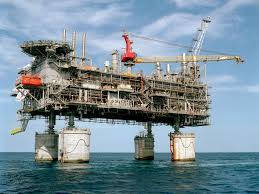David Greer OBE has been leading major projects and companies for over 20 years. Educated at the University of Edinburgh, he holds a B.Sc. with honours in civil and structural engineering. David Greer is also an avid sailor and yachtsman and he is a certified yacht skipper from the Royal Yachting Association (RYA).
The RYA is the United Kingdom’s central body for all kinds of boating and provides a wealth of information and training for those who want to get involved or improve their skills. RYA trains people in the use of many different types of watercraft, educates them about their rights to navigate public waters and supports local sailing, power boating and inland boating clubs in the UK.
In addition to training hobbyists and enthusiasts in enjoyable and safe boat handling skills, the RYA also provides world-class training to maritime professionals. RYA credentials are recognised and honoured the world over by commercial enterprises. Courses are given in several areas, including small boat sailing, navigation and seamanship theory, sail cruising and even windsurfing and personal watercraft. Courses for professionals include day skipper, advanced powerboat, coastal skipper, yachtmaster and professional practices and responsibilities.
Serco: Half a Century of Service
After an early career that featured engineering and petroleum economist positions with several of the oil and gas industry’s major figures, David Greer OBE, became exploration and production manager for Shell Compania de Argentina Petroleo SA in Buenos Aires, Argentina. He followed that with several positions of increasing responsibility that included leadership of several major gas and oil projects, notably the Malampaya Deep Water Gas to Power project in the Philippines. In early March 2014, David J. Greer was appointed CEO of all of Serco’s business in the Middle East, India and Africa.
For more than 50 years, Serco has served major businesses and governments worldwide in its provision of services to its constituencies. The firm employs more than 120,000 people in more than 30 countries worldwide in a wide range of activities, including operating air traffic management systems worldwide, managing education authorities on behalf of local governments, transporting more than 275,000 rail passengers daily and providing defense support services worldwide.
Serco traces its roots in the UK to a contract to perform systems maintenance for the Royal Air Force. That contract expanded to include operating the technical facilities and providing broad support to the RAF, a contract Serco continues to fulfil. As governments throughout the UK experimented with various outsourcing strategies, Serco worked closely with them to make certain their operations objectives continued to be met.
In the Middle East, Serco has several air space management contracts, as well as numerous surface transport contracts, including the iconic Dubai Metro, the world’s longest driverless light rail system. In addition, Serco recently acquired Intelenet, an Indian business process outsourcing firm, catapulting Serco to a position of global leadership in that industry.
The History behind Master and Commander
David Greer OBE, recently became the CEO of Serco Middle East, Africa and India. He has served other companies, including M.S. Al-Suwaidi Industrial Services Co., Ltd., and Regal Petroleum plc, in a similar capacity in previous years. In his leisure time, David enjoys yachting, photography and reading books and watching movies about the sea, such as Master and Commander.
First released in 2003, Master and Commander: The Far Side of the World is adapted from a series of novels written by Patrick O’Brian. The film takes liberties with the story narrated in O’Brian’s 20 novels. For instance, it sets the story in 1805 rather than 1812 so that Captain Jack Aubrey can be depicted as fighting the French instead of the Americans.
Although Master and Commander wavers in its commitment to O’Brian’s original story, it offers viewers a glimpse into the historical era and, more specifically, into life aboard a ship in the early 19th century. In fact, the director of the Naval Historical Center (NHC), Dr. William S. Dudley, deemed it Hollywood’s finest representation of life aboard a sailing war-vessel during that era. Another member of the NHC pointed to the lessons of teamwork aboard the Surprise and their relevance for contemporary sailors.
Enjoying Sailing
An Officer of the Order of the British Empire, David J. Greer works in the sphere of sustainable development and safety. Having engaged in the lifelong hobby all over the world, sailing is a pastime in which David continues to find enjoyment.
Planning Tips for Macro Nature Photography of Still Subjects
David Greer, an Officer of the Order of the British Empire (OBE), commands an accomplished career of leading major multinational corporations. Over the years, David has traveled globally to oversee everything from exploration and production activities to overall management of global contracting and outsourcing enterprises. At present, David leverages this expertise as CEO of Serco Middle East, based in United Arab Emirates. In his free time, David enjoys sailing, motor sport and taking nature photos.
Up close and personal, macro nature photography provides viewers with the perspective of being centimetres, even millimetres, away from a natural subject. Experienced macro nature photographers possess the ability to capture the tiniest follicles on an insect’s head or the smallest dewdrops gracing a colourful flower petal. However, the reason they succeed is often the careful preparation that precedes the photos.

 Planning a macro nature photo shoot requires extensive attention to detail. For still subjects, such as plants, photographers will want to prepare the site. Often, they have may have several subjects available, allowing them to select the best-looking plant. Once they find it, they will want to remove any surrounding distractions, such as weeds or grass, from the image frame, thus focusing the attention of viewers. Once ready to shoot, photographers should play with the background and light, using the manual focus on their cameras to bring out the details in the foreground and avert attention away from the background.
Planning a macro nature photo shoot requires extensive attention to detail. For still subjects, such as plants, photographers will want to prepare the site. Often, they have may have several subjects available, allowing them to select the best-looking plant. Once they find it, they will want to remove any surrounding distractions, such as weeds or grass, from the image frame, thus focusing the attention of viewers. Once ready to shoot, photographers should play with the background and light, using the manual focus on their cameras to bring out the details in the foreground and avert attention away from the background.
The Malampaya Project
After earning his Bachelor of Science with Honours in civil and structural engineering from the University of Edinburgh, David Greer embarked on a career in the oil and gas business, and became proficient in all aspects of offshore and land-based exploration and production operations. David J. Greer, OBE, was appointed as an Officer of the Order of the British Empire by Queen Elizabeth II in 2003 after his very successful completion of the Malampaya Deep Water Gas to Power Project for Shell Philippines Exploration (SPEX).
When David Greer arrived in Manila in April 1998 to begin his new job as Managing Director and Malampaya Project Director, his charge was to build an offshore gas production platform to extract natural gas from the huge reservoirs in the Malampaya gas field, about 80 kilometres west of Palawan Island, and deliver it by pipeline to gas-fired power stations on the island of Luzon, to help meet the island’s power needs. Greer essentially built the new venture from scratch, quickly organising a company of 300 professionals to confront what would turn out to be countless environmental, logistical, social and political challenges.
 The offshore platform they built is 40 meters wide by 90 meters long, and is 25 meters high from the superstructure’s floor to the helipad deck. In addition to the pumps and other production facilities, the platform includes living quarters for up to 44 people. The deck is secured to four shafts that rise from the concrete gravity substructure, a caisson about the size of a football field and 16 meters high that sits on evenly placed mounds of rock on the ocean floor to ensure a flat surface. The stability of the gravity substructure is ensured by 75,000 tons of iron ore inside the caisson.
The offshore platform they built is 40 meters wide by 90 meters long, and is 25 meters high from the superstructure’s floor to the helipad deck. In addition to the pumps and other production facilities, the platform includes living quarters for up to 44 people. The deck is secured to four shafts that rise from the concrete gravity substructure, a caisson about the size of a football field and 16 meters high that sits on evenly placed mounds of rock on the ocean floor to ensure a flat surface. The stability of the gravity substructure is ensured by 75,000 tons of iron ore inside the caisson.
Gas started flowing in mid-September, 2001 after the team’s monumental accomplishment of completing, on time and within budget, one of the largest industrial endeavours in the history of the Philippines.



